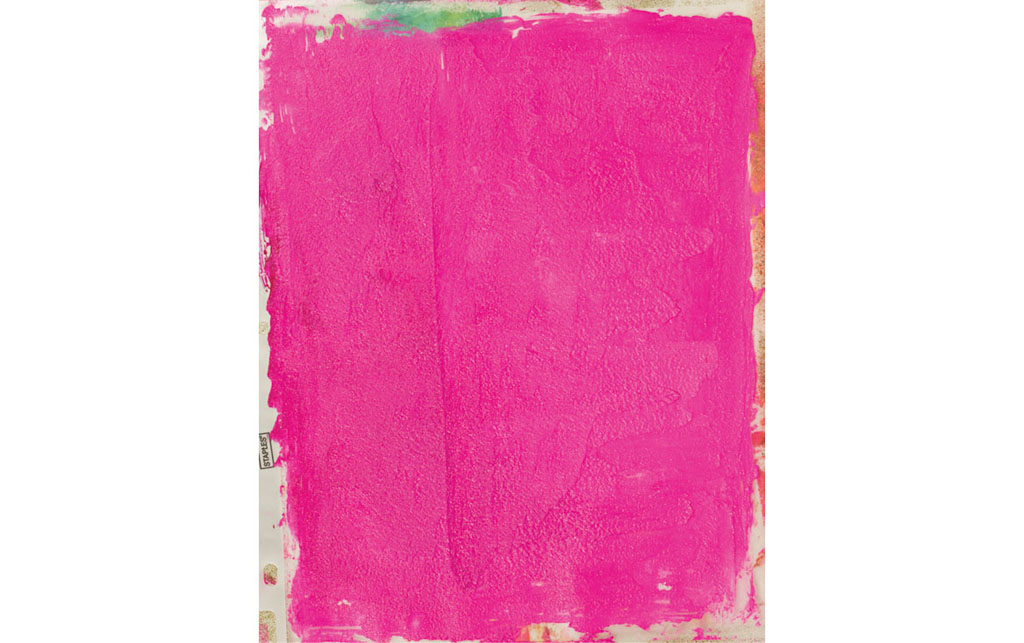
Look for items with interesting textures in the hardware store such as plastic sink mats and plastic fence materials. The patterns in these pieces make great stencils and mark-making tools to add texture to acrylic skins.
plastic page protector
fiber paste
fluid acrylic paint
trowel palette knife
bath or sink mats
plastic fencing
needlepoint canvas
soft rubber brayer
foam brush
printed papers and skins

Place a scoop of fiber paste onto the plastic page protector. Add a few drops of fluid acrylic paint and thoroughly mix with a palette knife. Use the bottom of the palette knife to spread the mixture over the entire surface of the plastic sheet in a flat, even layer.
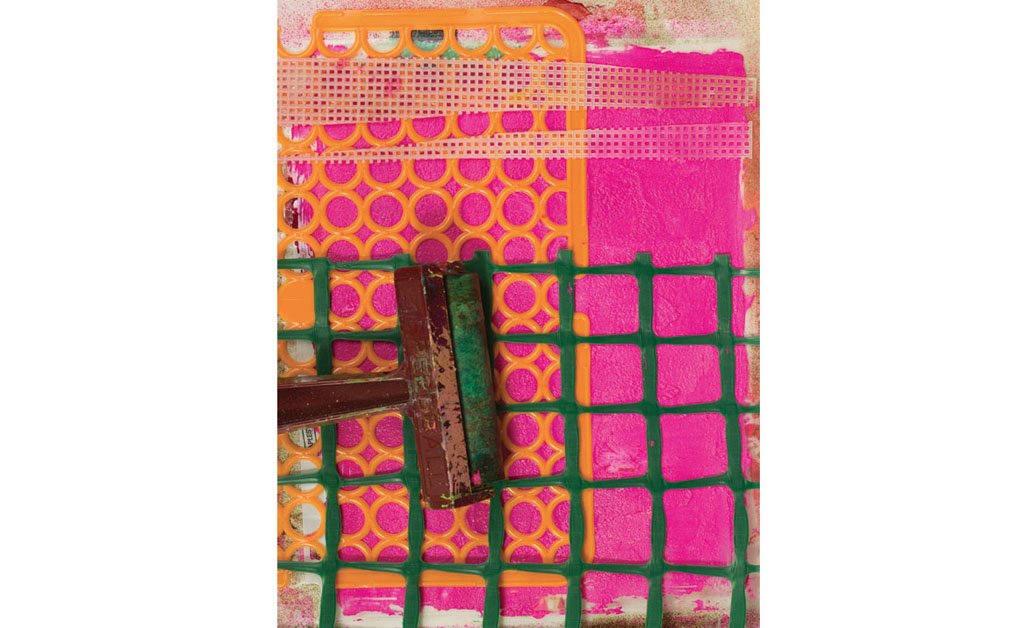
Place a plastic bath mat with circular shapes in the wet fiber paste mixture. Then place plastic fence material and pieces of plastic needlepoint canvas over the surface. Roll over all the items to press them into the paste.
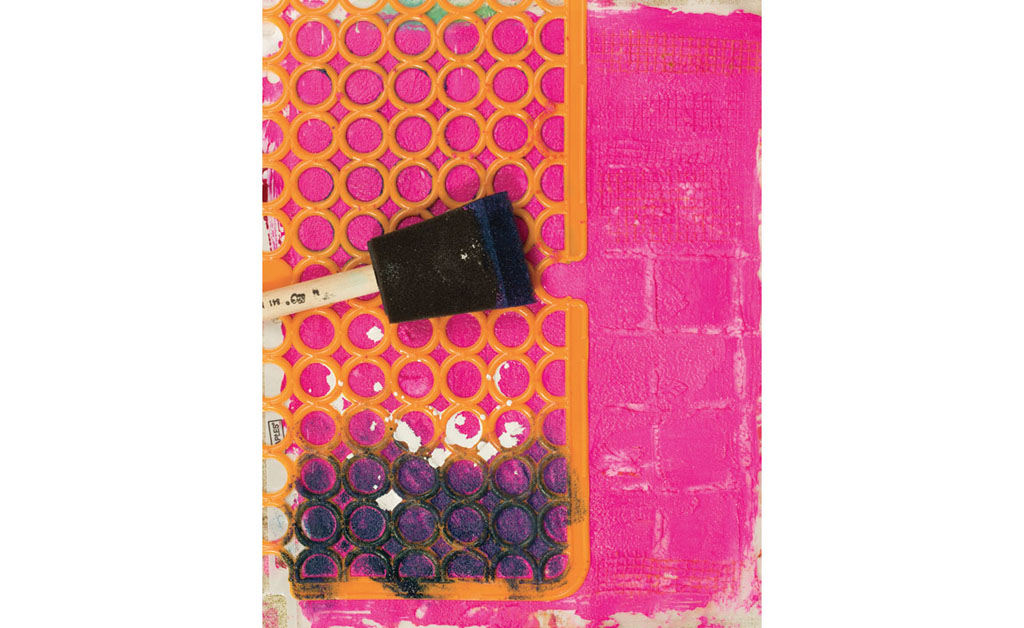
Remove the plastic fence material and needlepoint canvas. Add a little fluid acrylic paint to the edge of a foam brush and dab the brush through the sink mat. This will mix with the wet paste and blend colors. Add a few drops of fluid white paint.
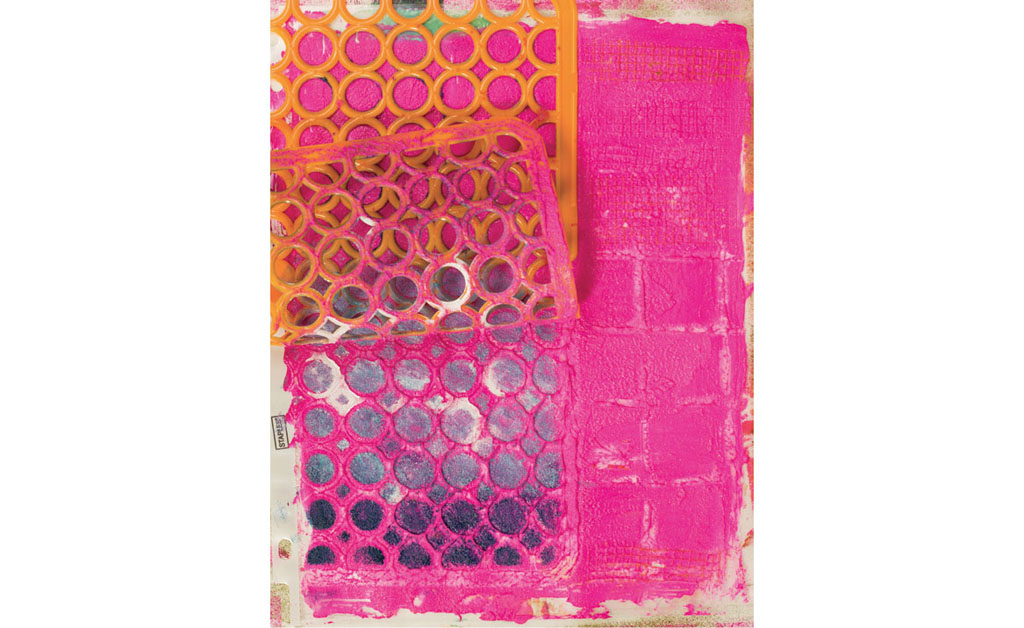
Continue to paint through the stencil. Lift the edge up to see how the texture is showing and the paint is mixing.
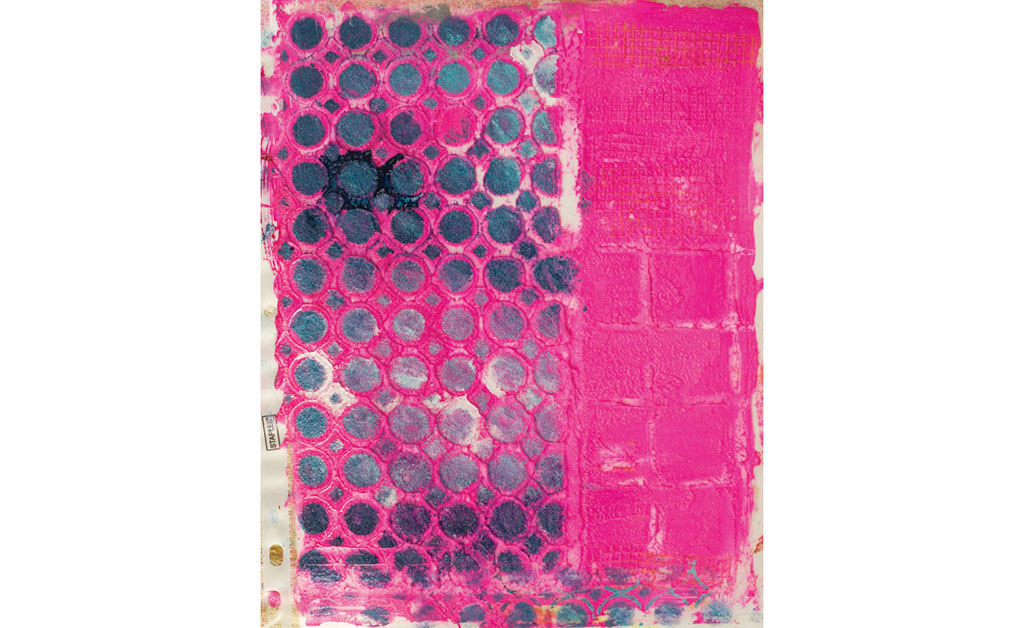
This is the final print. It will dry to a matte rough texture. Set aside to dry.
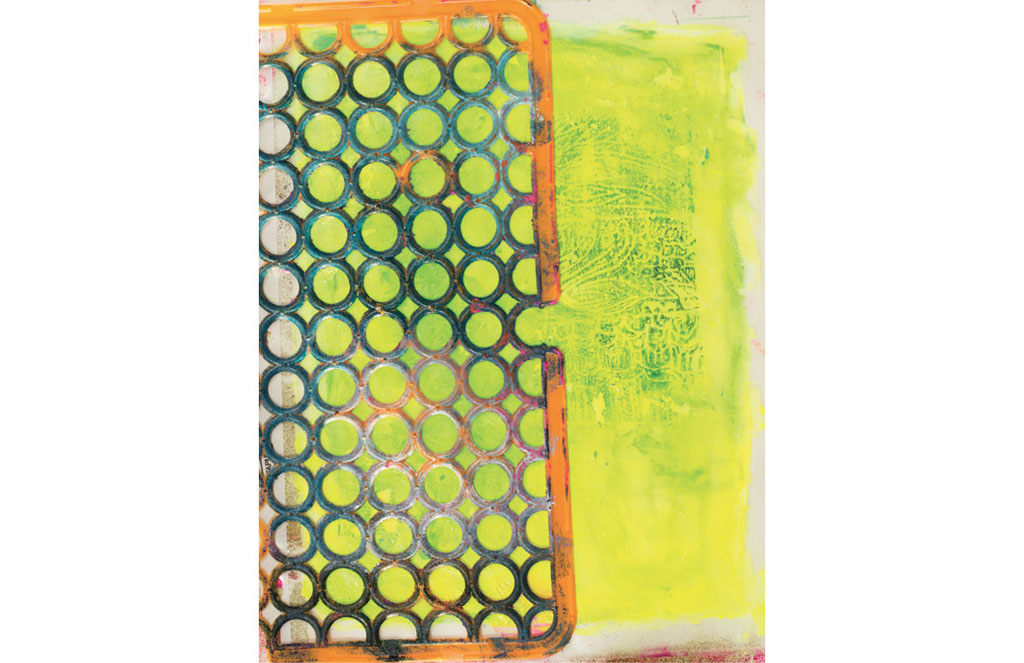
While the bath mat is still wet and covered with fiber paste, transfer the remainder paste by pressing it over previously printed papers and skins.
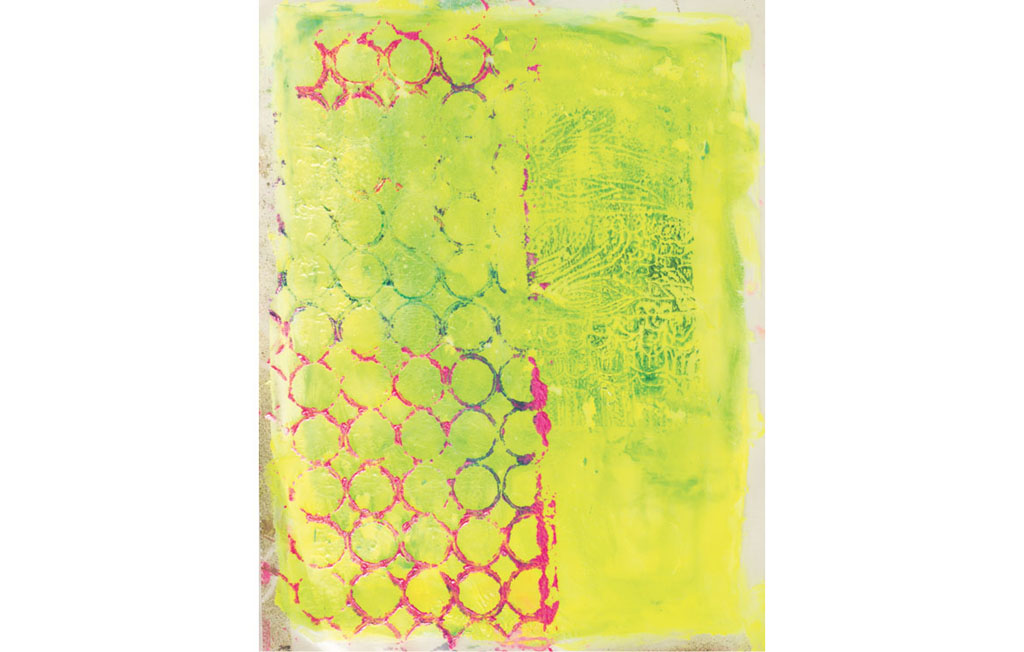
Here the bright pink transferred onto the bright yellow skin.
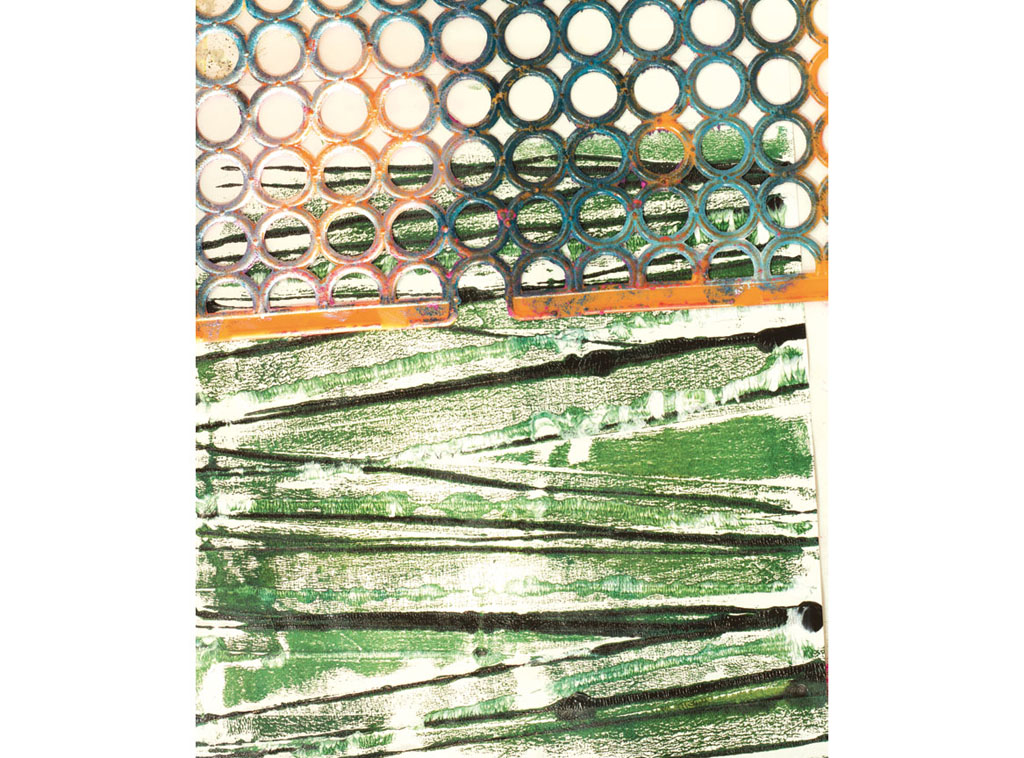
Here the bright pink transferred onto the green lines of a previously printed page.
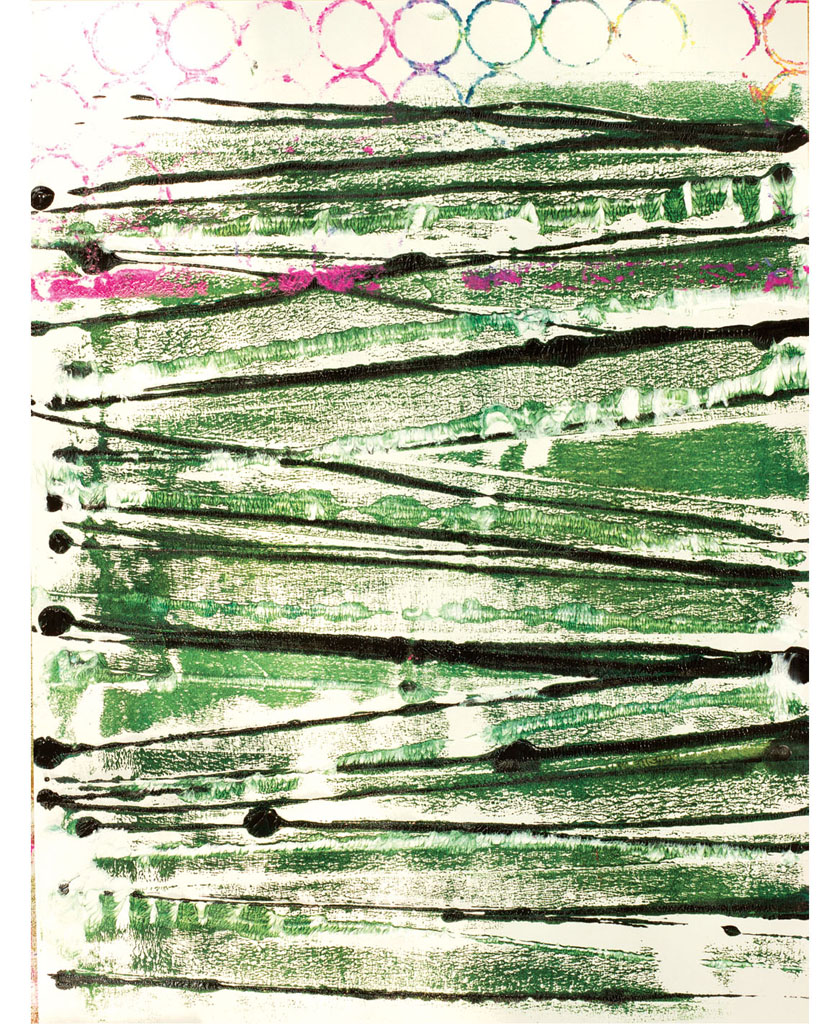
Print over masking tape and a dimensional paint print.